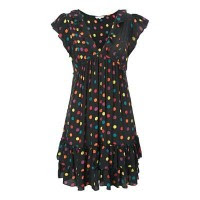Using Thriller ConventionsAfter much contemplation of what made typical film opening successful, we had to then decide what conventions we would include to make our own opening one that told our target audience that they were watching a thriller.
The first thing we had to think about was the time it would be filmed and by filming it at nightime, my group and I thought the dark atmosphere would make our opening evenmore chilling. We all knew from films we had previously watched that an eerie surrounding is something commonly associated with a thriller or horror and because of this we thought a night setting would present a great deal of suspense.
We also tried to use specific camera angles in order to create a tense feeling as well by contrasting quick, sharp cuts with slow zooms, consequently making the audience feel uneasy whilst adding a hint of confusion too. We also blurred some shots to present ditortion and abmornailty as well as including high and low camera shots to create a sense of dominance and intimidation. In my opinion, this was ideal in showing how much control the mysterious person had over the girls and therefore also gave the impression the figure was a man.
The dark, black clothes worn by the hoodie presented a feeling of danger and the unknown, therefore showing how the convention of costume, in this case, increased the mental torment for the character.
Another thriller convention we added was sound, that in my opinion, made all the difference to our opening. The non-diegetic sound we used enhanced the sequence greatly, presenting a rather edgy and uncomfortable atmosphere. One thing my group and I noticed about the sound was the way that it all fitted in so perfectly with our whole film opening. We managed to edit it so that the loud and scary parts of the sound occured at the exact moments of a tense climax and as a result, made the opening evenmore sinister.
The type of font we used during the opening credits also made our thriller opening slightly spooky, because we used plain, black and white titles, showing a contrast of light and dark. The font may have been rather simple, but my group and I thought it would be slightly unusual to include a normal element.
We also altered the brightness of the shots, making them darker in order to make the whole film seem as if it was set at night. This again added to the many frightening elements of our film and the mise-en-scene showing a normal, cosy house containing furniture and other hoursehold items contrasted from the horrific side to the opening. The clothes worn by the girls in the film also broke the convention of a thriller, however we all felt that the difference between the two atmospheres worked well in creating confusion and fear.
Overcoming DifficultiesThere were quite a few difficulties we faced throughout the filming process, however part of the process was also to overcome the struggle.
A common problem we had was the continuity errors that appeared. We noticed how easy it was to make a continuity error and eventhough it made parts of the film jump and the process slower, we took the time to film the scene again or place another shot in between the sudden jumps so the error wasn't as noticeable. These type of errors appeared especially when we had to stop and start scenes or had to finish filming the rest of a scene on a different day, at a different time of day. To overcome these problems, we found ourselves filming specific secenes again or just darkening some to make it seem like they were all filmed around the same time.
We also had a problem with brightness when it came to filming the ending where we originally planned to have the mysterious figure presenting a knife to the girl. We found that it was far too dark to film that part, however we all agreed it would be better if we didn't as this created more mystery and intrigue.
There were times where unwanted background sound ruined the tense feeling and because of this we had to mute this before we added the scary sound. One of our scenes that we filmed outside was disturbed by the wind and we it was therefore hard for us to hear the girl's conversation. We refilmed this scene to overcome this problem and throughout the filming process we found ourselves often filming other scenes again, sometimes because the actor looked at the camera. However this wasn't too much of a problem and we soon achieved some relatively good scenes.
There was also periods where technology made progressing through the task quite hard, especially when the camera was running on a low battery or when we were uploading our film to the computer programme, Pinnacle. We found that Pinnacle could sometimes be temperamental when uploading, however we didn' let this bother us too much because the programme still uploaded what we wanted.
At times there was also the difficulty of arranging times when we would film, and eventhough it was a struggle to find out when everybody was able to film, we managed to organise a filming schedule that suited us. Some of the filming we did was in school which therefore made the filming process easier for us because we were already ready to film and could access the camera equipment quite easily, however when we filmed outside of the school environment, we were all required to commit ourselves and book the equipment before hand. We had discussions about when we were all available to film and because of this we have so far managed to continue filming at a steady pace and we could therefore proceed to editing as soon as possible.










